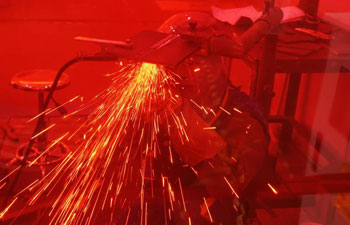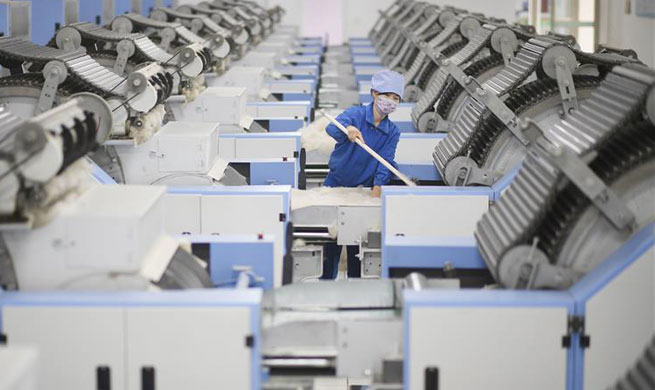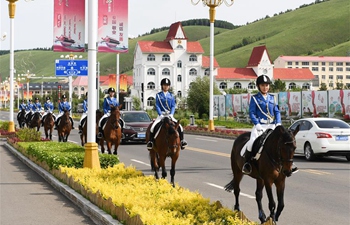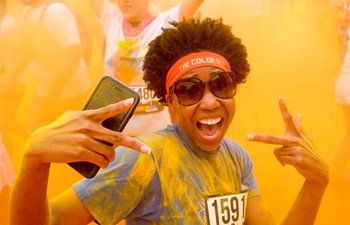SHANGHAI, June 25 (Xinhua) -- A growing number of Chinese drug rehabilitation institutions use virtual reality (VR) technology to help drug addicts.
At Shanghai Qingdong rehabilitation center, patients wear a VR helmet with an eye-movement tracking system. Their biological indicators, including eye movement, heart rate and skin conductivity, are recorded to determine their level of addiction.
Virtual reality system offers the Patients various scenarios, such as parties in a bar or gatherings in a hotel room, in which men and women take drugs around the user. These videos are played to stimulate addicts' desire for drugs. Then they view videos showing how devastatingly drugs will harm their health so as to suppress their desire for them.
"It used to be difficult to assess the level of addiction for individual users. The new system can give us more accurate data to help design individual rehab programs," said Zhao Min, deputy director of Qingdong rehabilitation center.
"When the biological indicators shows abnormal figures, the eye tracking data pins which part of the simulated videos one is responding to, so that we may know what are the things that triggers addiction," said Xu Ding, a researcher with the Shanghai rehabilitation administration.
The system is developed by Shanghai Mental Health Center in cooperation with Shanghai rehabilitation administration, East China Normal University school of psychology and cognitive science, and Shanghai Qingtech, a company specializing in technological tracking of eye control.
Qingdong rehabilitation center is one of three Shanghai centers where the virtual reality system is used. Around 900 patients in Qingdong have used the virtual reality system since June 2017.
"Virtual reality system creates an immersive experience. It looks quite real. I have used the treatment for a year and it is quite effective," said a man surnamed Wang. According to Shanghai Bureau of Justice, the rate of relapse has declined among drug users. In a sampling survey of 5,319 users, 25.4 percent of them stayed sober for three years in 2015. The rate was raised to 33.9 percent in 2016, and further raised to 41.7 percent in 2017.

















